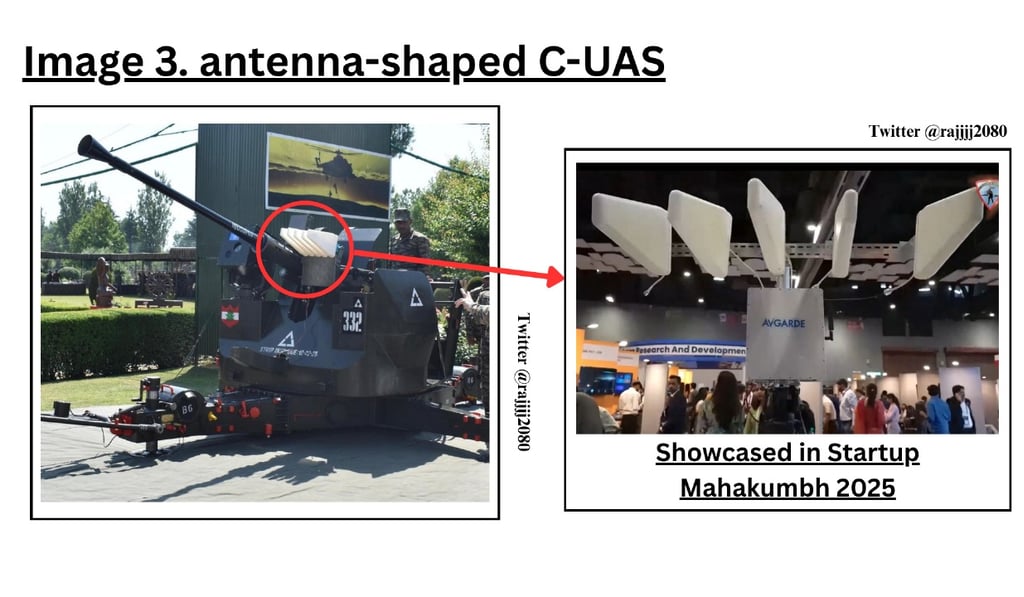Bofors L-70 upgrades that saved India from Pakistani drone attacks
BLOGS
Rajvardhan Desai
8/15/20254 min read
India’s L-70 Modernisation: From Legacy Gun to Drone Slayer (Part 1)
During the brief, 3-day conflict between India and Pakistan in May 2025, India’s air defences were put to the ultimate test. In the darkness of the nights, post Operation Sindoor, Pakistan launched numerous waves of swarm UAVs in the hopes of overwhelming India’s air defences and striking its key military installations and cities. But in those blackouts across targeted cities, the civilians captured the visuals of multiple red-coloured projectiles heading into the darkness and shielding India’s cities from the onslaught of Pakistani drones.
While the media was busy crediting the S-400 for every air defence engagement, the actual system behind these drone interceptions was the good-old Bofors L-70 AAG. To understand how this gun, developed in the 1950s, stopped the most pressing threat on the modern battlefield, we will explore the critical upgrades and integrations that turned the outdated anti-aircraft guns into a potent, cost-effective drone killer.
The upgrades
With the advancement of modern fighter aircraft technology and warfare, the Bofors L-70 fell short and became outdated in its traditional role as a point-defence AAG in the 1960s. But for the Indian military establishment, it was not that outdated, at least not for now.
In 2017, Bharat Electronics Limited (BEL) won a decade-old pending L-70 upgrade tender against competitors like Larsen and Tubro (L&T) and TATA Power SED. The tender mandated the incorporation of a ballistic computer and thermal sights, along with the replacement of hydraulic drives with digital electronic drives.
More than 200 L-70 guns have been upgraded since 2021 and deployed at forward positions at LAC, Arunachal Pradesh and cities close to the India-Pakistan border.
Heading to the specifics of the upgrades, the gun, originally, was a towed, hydraulic drive system, which required intense manpower to operate (crew of 6 and two to reload). The upgrade replaced these old hydraulic drives with electric drives and motors for faster turret traverse and elevation against fast-moving targets. Each upgraded L-70 gun also comes with batteries to operate independently without any need for an external power source, and can operate as a standalone air defence unit with its EO/IR (electro-optical) sensors powered by the battery.

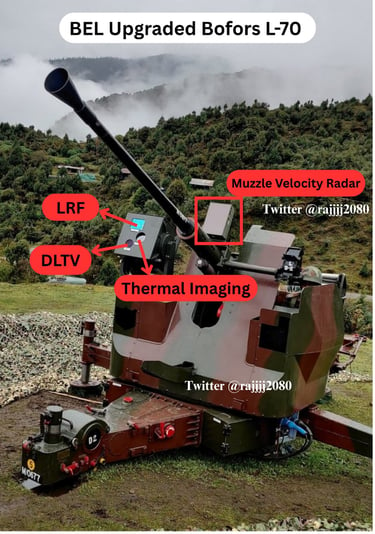
Talking about the EO/IR sensors of the L-70, these are arguably the best upgrades these guns have received. Here are the following EO/IR sensors that have been integrated into the optronic pedestal and their range:
Laser Rangefinder- 9 km (To calculate the distance of the target)
Thermal Imaging Camera- 12 km (Detect and track thermal signatures of aerial targets)
Daylight Television Camera- 9 km (High-resolution video camera for visual identification of the aerial target in daytime)
Muzzle velocity radar- Attached above the Gun (Used for measuring the muzzle velocity of the rounds being fired and adjusting the gun for accuracy).
Other major components include a video display, which shows the data from the EO/IR sensors for the gunner and a fire-control computer, which takes and processes the data inputs from the sensors and adjusts the gun’s position according to the data. A notable feature of the upgraded L-70’s fire control computer is its ability to integrate with any Fire Control Radars (FCRs), enabling both remote cueing and firing of the gun system through external radar inputs.
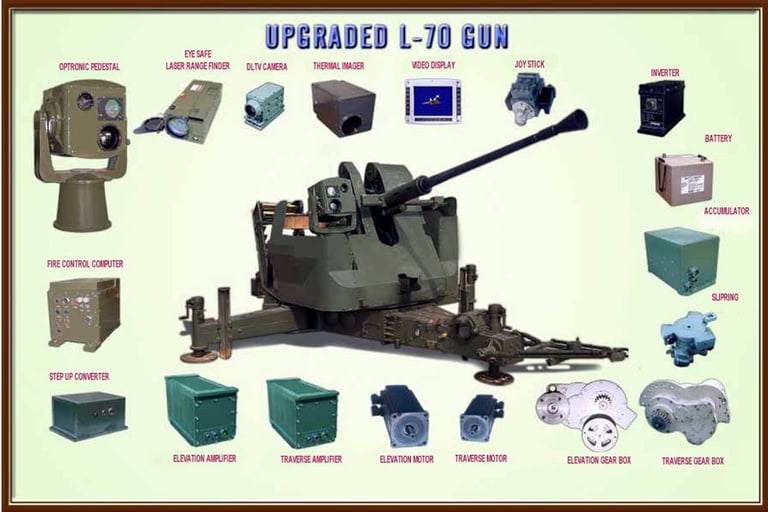

The Ammunition- The L70 primarily uses two types of ammunition during live-fire exercises and combat. The first is 40 MM L-70 HE/T (High-Explosive Tracer) rounds, which are commonly used due to their cheaper production costs. The other type is the costlier 40 MM PFFC (Pre-fragmented proximity fused) rounds, which are mostly reserved for combat use, as these proximity-fused tungsten rounds can detonate in the vicinity of the UAVs and destroy them without the need for direct contact.
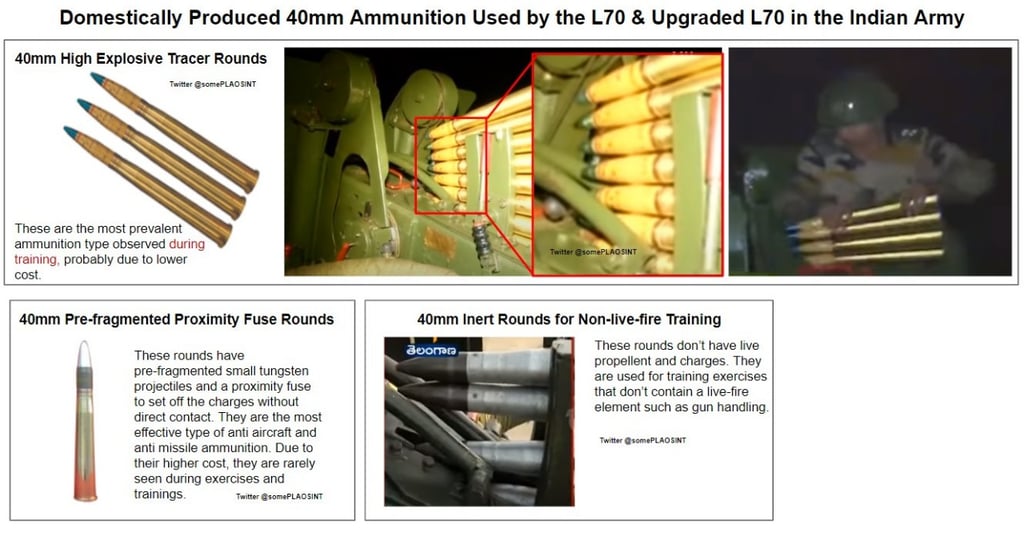

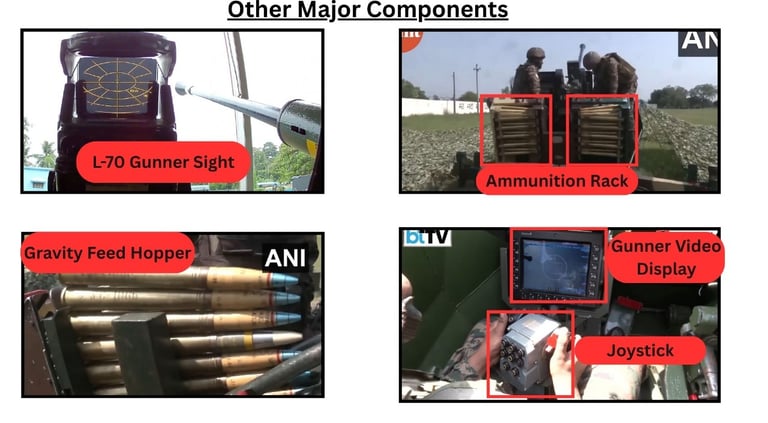

Unique Configurations
There are the BEL-upgraded L-70s, and then there are the unupgraded or partially upgraded L-70s in the Indian Army’s service. But there are also rare visuals of L-70s with distinct configurations
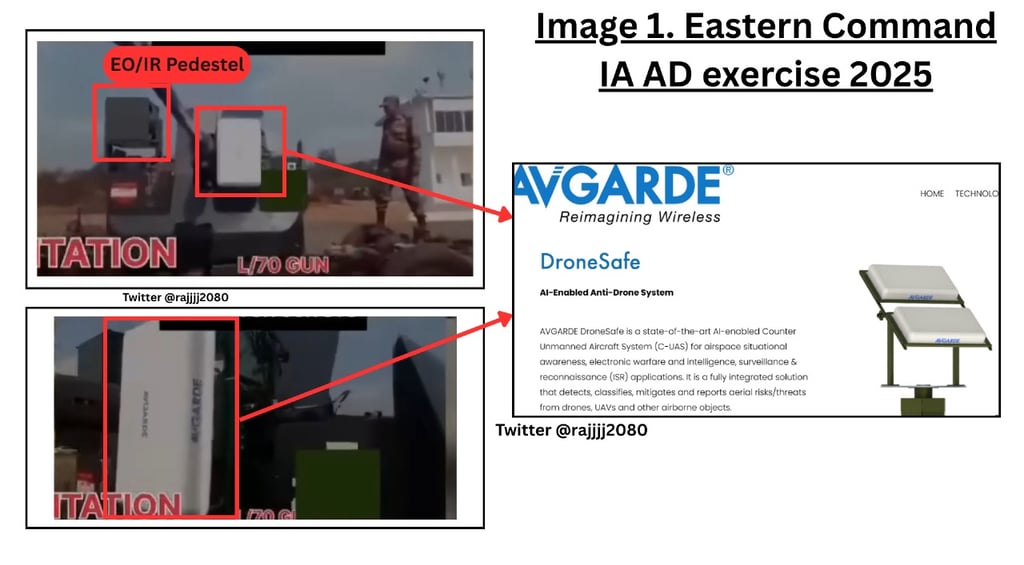

Image 1 showcases the integration of a Counter-Unmanned Aircraft System (C-UAS) system, developed by Avgarde, a Bengaluru-based startup specialising in anti-drone technologies. This particular system is possibly Avgarde’s “DroneSafe”, an AI-enabled smart sensor capable of differentiating between targets and employing soft-skill measures, such as spoofing and jamming their GNSS and WiFi. Its jamming range is possibly around 1-2 km.
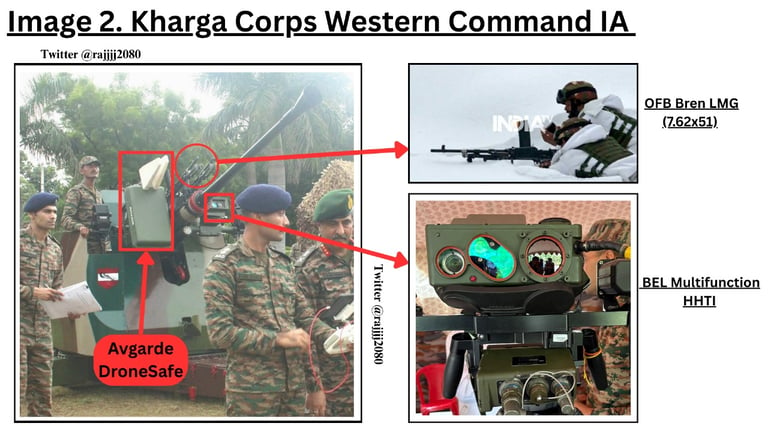

Image 2 again showcases the integration of Avgarde’s DroneSafe, but this time, with two antennas mounted above it. Another distinct element in this configuration is the integration of a different electro-optical sensor, possibly BEL’s Multifunction HHTI (Hand-Held Thermal Imager), with a built-in laser range finder. Its range is around 5-8 km and was originally developed by Israel’s IAI. But perhaps the most unusual component of all L-70 configurations is the attachment of two OFB Bren LMGs (7.62x51mm) above the L-70 gun.
